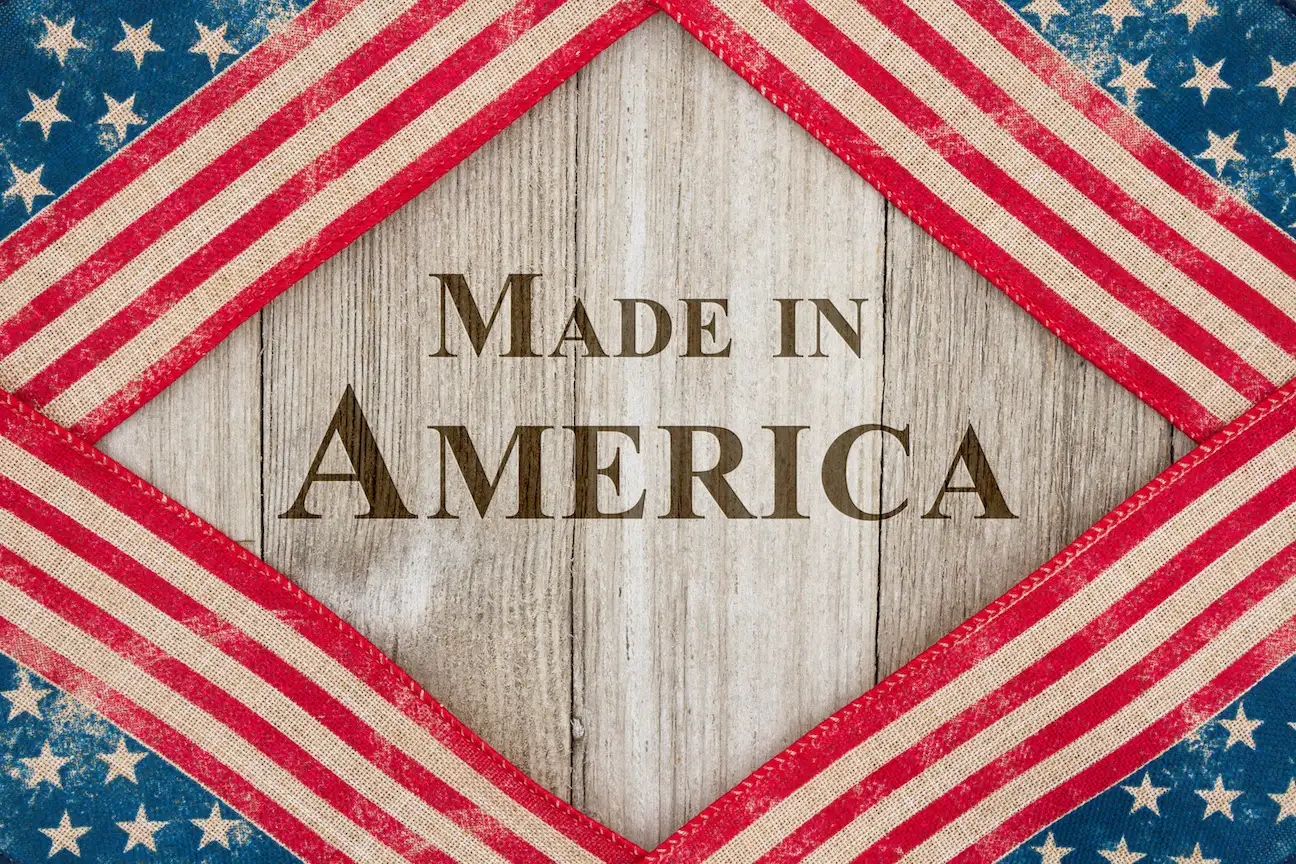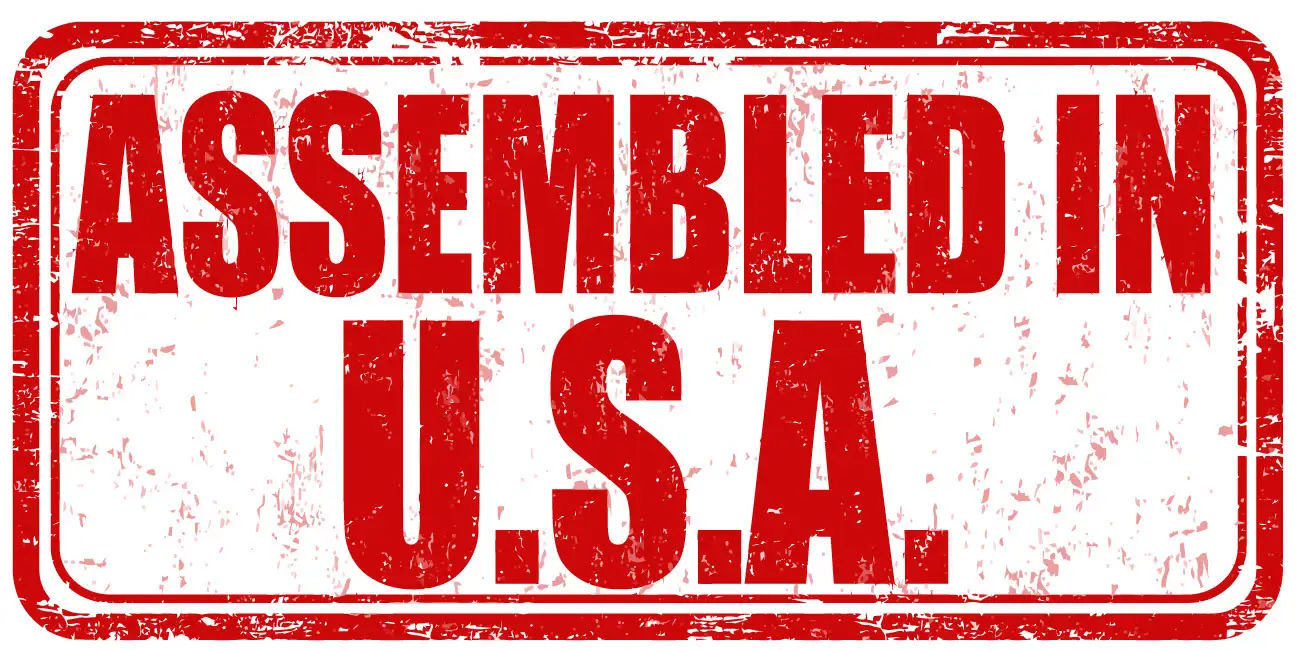American-Made vs. American-Assembled

You want American made products, items that hard-working Americans built on U.S. soil. Unfortunately, when you go to shop in store or online, finding an American made product is not so straightforward. You see a variety of phrases: “Made in USA”, “Assembled in USA”, “Manufactured in the USA with Global Components”. For the average consumer, it can be overwhelming.
Each of these phrases mean something different, but how do you tell them apart? What are the differences between each label? The Federal Trade Commission (FTC) monitors competition in the marketplace. Its mission is to protect American consumers from deceptive or unfair business practices. This means it also sets the standards and regulates each of these different Made in the USA claims for all products made or imported in the US.
Made In USA Defined
The Two Types of Made In USA Claims
Under the regulations set by the FTC, there are two types of claims that a Made in USA label can fall under: unqualified and qualified.
Unqualified Claims: A claim is unqualified for any products that fall under the standard of “all or virtually all” components made in the US. This means any parts made in any of the fifty states, the District of Columbia, and United States territories and possessions. The product must all meet the following requirements:
- All important parts and manufacturing must be from or done within the United States.
- There must be little to no foreign content in the final product.
- The manufacturer must provide reliable evidence to back up its Made in USA claim.
- The final transformation, or processing, of the product must take place within the United States.
For example, say there is a Nevada-based company that produces propane barbecue grills. It defines the major components as the gas valve, burner, and the aluminum housing for these parts. These three parts are made in the States, but the knobs and tubing are imported from Mexico.
Though these components are not from the US, they are deemed negligible foreign content when considering the entire grill, the manufacturing cost, and process. The company could claim their product as Made in the USA and it would not be considered deceptive, as the major components are made in the US.
Qualified Claims: This type of claim comes with qualifiers, hence the designation as a qualified claim. It is most often used when a manufacturer’s product and its components are not completely made in the United States. Qualified claims must have an additional description that details the extent, amount, or type of a product’s US-made content or processing. It should also state that the product is not entirely of US origin.
Claims like this are often phrased as:
- Made in the USA with US and global (or foreign) parts
- Assembled in the USA with imported parts from [foreign country]
- Made in the USA with 60% domestic content
It is important to pay attention to what each label says so you understand exactly what you are buying. It also helps outline the difference between Made in the US and Assembled in the US.
Assembled In The USA Defined

Any product containing foreign parts cannot be considered Made in the USA. However, there are many goods that are made of foreign parts but assembled in the United States, which may qualify them to be labeled as Assembled in USA. The main requirement is that the imports undergo “substantial transformation” in the US.
According to the US Customs Service, a “substantial transformation” is defined as any manufacturing process that results in changing the imported good into a new product, with new features and a new use that is different from its use before being processed.
Using the previous example, a Nevada-based company manufactures propane barbecue grills, but all its components are foreign-made. This product would definitely not qualify for the Made in USA label. Claiming otherwise would be considered deceptive. This product would also not be considered eligible for Made in USA from Foreign Parts or Assembled in USA because the parts did not undergo “substantial transformation.”
Another example would be an exercise treadmill assembled in the US. The assembly of this treadmill requires significant amounts of work and falls under the “substantial transformation” definition set forth by the US Customs Service. All of the major components, including the motor, frame, and electronic display, are imported. A few of the less important components, including the handlebar covers, the power key, and the treadmill mat, are manufactured in the United States. Because the value of those US-made parts is negligible in comparison to the value of all the parts, claiming this treadmill as Made in the USA would be deceptive. Claiming it as Assembled in the USA would not. It would also be up to the company whether or not to label it at all.
Why Does It Matter Which Label Is Used?
While outsourcing manufacturing and production overseas has its benefits, it also comes with drawbacks. With overseas manufacturers, there might be issues with quality, security, and an overall lack of control regarding the entire process. Many United States citizens enjoy the lower costs, but admit they would much rather pay more for US-made products if quality control could be ensured.
This means it is especially important for consumers to understand the difference between Made in USA labels and Assembled in USA. With a Made in USA product, they can be sure that their product, despite the higher price, is also higher in quality and often comes at a lower shipping cost than other products. Consumers also do not have to deal with the hassle of miscommunication or language barriers and long turnaround times.
A Made in USA label also tells buyers that their purchase helps support the nationwide economy and local jobs. By increasing demand for domestic production, buyers can also help increase the number of jobs available to Americans across the nation.
Buy “Made In The USA” by making the conscious decision to buy products produced and manufactured on US soil, you can help contribute to growing and improving the economy. Many companies have shifted their production overseas to save money in production costs, but this is not how it has to be. You can find and purchase Made in USA products to show your support for a return to domestic manufacturing and rest assured your goods will be of the highest quality.
